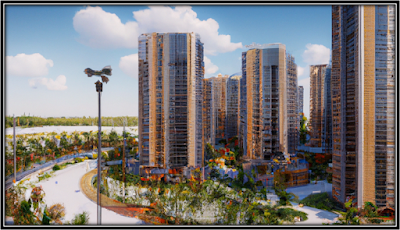$45.00 USD
The first thing you will notice is that the data entry actually takes place directly on the monthly model. There are two separate monthly tabs. One is for entering the budgeted figures for all items (the forecast) and the other is for entering actual values as they happen. This gives a great comparison in real time of how the financial performance / equity requirements / spending has come along in comparison to what was planned.
Normally, I don't do a budget as well as an actual summary, but for a real estate developer, this is actually useful to know. Each of the monthly and annual tabs will show the value of the given row for the budget and actual as well as show a % of total budget utilized.
I rolled all the summary totals up based on three phases. The user can use one, two, or all three. Additionally, there are separate tabs to show the budget vs. actual detail in regards to hard costs of each phase as well as a summary total of soft costs across all phases.
The more advanced logic that was built in is a LTV (loan-to-value) so that the model knows how much cash is required in a given month and based on the LTV % defined, the user will see how much equity is required compared to how much of a loan is utilized. This can change as the result of each month populates. Interest accrual happens and is measured against the total interest reserve entered. As the final loan amount is paid off, any remaining interest reserve is credited back or if more interest was required then it will be reduced from the cash flow.
In order to see the timing of the cash flows and the performance therein, an IRR was calculated on a monthly and annual basis. The annual is built by referencing the monthly rate. This is more accurate than trying to sum everything up into annual periods since the cash flows of a real estate development project can have large variances in any given month as far as cash needed vs. cash return. This is especially true if multiple things are being constructed as early items are being sold off.
The nuances of this kind of scenario require a different style of template building in order to get to meaningful financial performance measuring. Stacking that against a budget is all the more beneficial to the manager.
Normally, I don't do a budget as well as an actual summary, but for a real estate developer, this is actually useful to know. Each of the monthly and annual tabs will show the value of the given row for the budget and actual as well as show a % of total budget utilized.
I rolled all the summary totals up based on three phases. The user can use one, two, or all three. Additionally, there are separate tabs to show the budget vs. actual detail in regards to hard costs of each phase as well as a summary total of soft costs across all phases.
The more advanced logic that was built in is a LTV (loan-to-value) so that the model knows how much cash is required in a given month and based on the LTV % defined, the user will see how much equity is required compared to how much of a loan is utilized. This can change as the result of each month populates. Interest accrual happens and is measured against the total interest reserve entered. As the final loan amount is paid off, any remaining interest reserve is credited back or if more interest was required then it will be reduced from the cash flow.
In order to see the timing of the cash flows and the performance therein, an IRR was calculated on a monthly and annual basis. The annual is built by referencing the monthly rate. This is more accurate than trying to sum everything up into annual periods since the cash flows of a real estate development project can have large variances in any given month as far as cash needed vs. cash return. This is especially true if multiple things are being constructed as early items are being sold off.
The nuances of this kind of scenario require a different style of template building in order to get to meaningful financial performance measuring. Stacking that against a budget is all the more beneficial to the manager.
More Real Estate Financial Models:
- Hotel Deal Analysis - Advanced
- Fix and Flip Scaling Model
- Multi-Family Acquisitions (detailed)
- Sale-leaseback Analysis
- Retail Building Construction
- Lot Development
- Strip Mall Acquisition Model
- Apartment Building
- Single Tenant Industrial
- Mobile Home Parks
- Mixed-Use Real Estate
- Self Storage: Up to 6 Deals
- Rental Property Scaling
- Condo Development
- STRs (Short-term Rentals)
- Unit-Based Real Estate Acquisition
- Assisted Living Facility / Nursing Home
- Short-term Rental Arbitrage
- Hotel Development / Acquisition
- IRR Sensitivity Analysis (occupancy)
- Multi-family Real Estate Acquisition (annual only)
- Real Estate Flipping Calculator
- Property Management Business
- Real Estate Brokerage
- Real Estate Checklist
- Rental Property ROI Calculator
- Seller Financing
- General Cash Flow Waterfall: 3 IRR Hurdles
- General Cash Flow Waterfall: 3 IRR Hurdles and GP Catch-up Provision
- Preferred Equity
- Preferred Return
- Zero Down Seller Financing
- Cost Segregation Study
